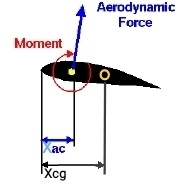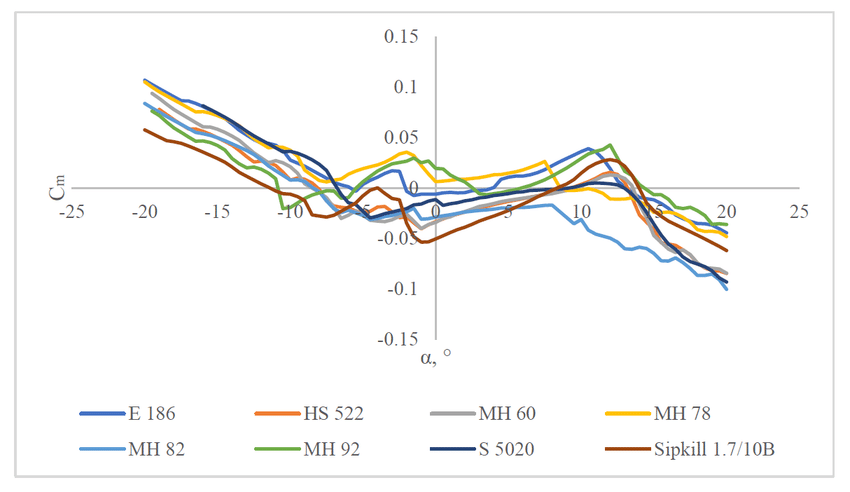I am working on designing a remote-controlled flying-wing aircraft and am learning about important configurations and factors in the design.
I have been going through this page because it seems like a pretty useful resource, and I have seen it referenced a few times in other posts. Upon going through it, however, I ran into something which has generated a question about the moment generated by an airfoil, and I believe it relates to my understanding of the aerodynamic centre.
For a given airfoil, I know that, as the angle of attack changes, the center of pressure shifts along the chord line. I also know that (within an operating range avoiding stall nonlinearities) the magnitude of the lift force that acts at the center of pressure increases too.
This leads to my current understanding of the aerodynamic center. If you pick an arbitrary point along the airfoil's chord and calculate the moment generated by this lift force, it will likely change as the angle of attack changes because both the moment arm (distance between an arbitrary point and center of pressure) and magnitude of the force change. The aerodynamic center is, therefore, the point at which the moment does not change with respect to the angle of attack.
My confusion then comes from the diagrams shown on the provided website and elsewhere indicating that the lift can be said to act at the aerodynamic center. I can accept this fact generally, but I am therefore confused about how we can say that it also generates a moment about this point. This is particularly relevant to the website I showed above: how can there be a moment generated by the lift force about the center of mass while also being a moment generated at the aerodynamic center? My understanding is that this moment about the aerodynamic center IS generated by the lift force.
I apologize for making this post so long for what is likely a simple question, but I wanted to explain my current thinking so that hopefully someone can point out the error in my reasoning. Any help would be greatly appreciated.


